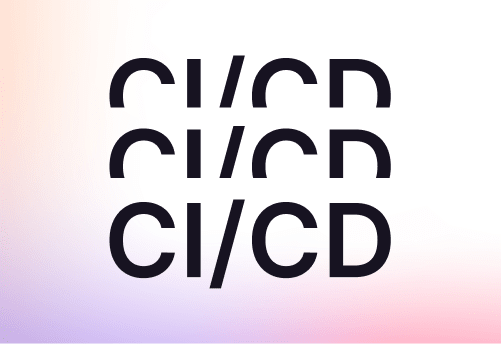Published on: February 5, 2024
6 min read
How Carrefour and Thales are evolving their CI/CD platforms
Learn how a large retailer and an aerospace and defense company are using GitLab to evolve their CI/CD platforms to increase developer productivity.

An efficient and secure CI/CD platform can be especially critical for some organizations — say, a large multinational retailer or an aerospace and defense company. Fortunately, Samuel Le Garec, a technical architect from Carrefour, and Jordan Dubié, Chief Product Owner for the software engineering environment at Thales, joined GitLab for a roundtable discussion at our DevSecOps World Tour stop in Paris. They shared their experiences and lessons learned from building CI/CD platforms for thousands of developers, and improving productivity and security along the way.
Here are some of the highlights from their conversation.
Can you tell me about yourselves and your team?
Dubié: I am the Chief Product Owner of the software factory, which is the software development environment of the Thales Group. Thales is a French industrial group that operates in the aerospace, defense, security, and digital identity sectors. Thales is 80,000 people, including 30,000 engineers, specifically 15,000 software engineers.
Today, our team is a little less than 50 people. We also do the build and the run and have a part, therefore, in 24-7 support, following the sun. We have different instances, and we have domains of different sensitivity. So we have several platforms, all self-hosted. On each of these platforms, we deploy the entire environment of the software factory. We also run a part of it, and then we are supported by other teams who take over these activities.
Le Garec: I am an architect at Carrefour. I’m responsible for the engineering platform within the software factory and implementing the CI/CD platforms for the development teams. We have between 1,000 and 1,500 developers, so they commit like crazy. Today, I have a team of about 15 people. Our primary focus is to evolve the CI/CD platform, operate it, and manage incidents. We do that 24-7 today. We work mainly for the IT department in France. Then, I have other people who set up all the CI/CD templating and blueprints, the goal being to speed up the project as much as possible.
Can you share some numbers to give us a sense for the scale of GitLab in your organization?
Dubié: Since we’ve been using GitLab, we’re at 30,000 projects, 70,000 issues, and 280,000 merge requests.
Le Garec: At Carrefour, I think we have less GitLab experience than Jordan since we got our GitLab subscription at the beginning of the year. We have over 10,000 projects today on our CI/CD platform and then many pipeline executions, builds, and deployments that are as automated as possible. And we have 100,000 commits per month, to give you an idea of our activity.
What was it like before GitLab?
Dubié: It was a very heterogeneous environment. We had all these different business entities, each with their own IT teams that were on site. I was in Toulouse, but there was an entity in Bordeaux, as well. The different environments in Bordeaux, Toulouse, Valence, and Paris were completely separate platforms. That was a major obstacle to collaboration in the group. We had all these heterogeneous platforms with tools that, most of the time, hadn’t been updated in three to four years. So, in terms of functionality, we were far behind the market's state of the art.
Le Garec: We were deploying many different tools. We realized that maintaining our platform was becoming more and more complicated as the maturity of the development teams increased. They always asked us for more tools, and we reached a point where we couldn’t afford to do it anymore. That’s when we thought about an all-in-one solution. And that’s when we chose GitLab.
Is GitLab new for you? What are your initial goals?
Le Garec: GitLab is new for us — we started using it in April of this year. We are using GitLab Ultimate SaaS. Our goal is to use as many GitLab Ultimate features as possible. Our plan for the first two or three years is to migrate our source code to GitLab. So far, we’ve managed to move off of Bitbucket. Our next goal is to get rid of Jenkins and move to GitLab CI.
How has GitLab helped to improve the speed and quality of your delivery processes?
Dubié: We bet everything on automation. We go all out on everything that can support CI/CD so that developers can get feedback as quickly as possible. We also use SAST, DAST, secret detection, and software composition analysis.
One thing that was important for us was autonomy. We try to give our developers as much autonomy as possible so that people can create their own group projects. It seems very simple, but in the previous platform with Bitbucket, you had to go through tickets to have that; it was not in the hands of the developers. Today, there is much more autonomy, which allows them to go faster.
We also benefit from common, shared features; the shared runners, for example, are something we appreciate. We are already working on them because they will add a lot of value for developers who today have difficulties having a development environment that meets their expectations.
How would you describe an ideal software delivery process with GitLab?
Le Garec: For me, an almost ideal delivery process is full automation with everything automated — the build, the test, the releases, the versioning, and the deployment, using deployment techniques such as canary deployments and feature flags. For me, that’s something we want and need to go to, at Carrefour at least.
What are the reactions of the users or developers using GitLab?
Le Garec: They are pleased. One of the reasons we went to GitLab was the lack of features we had on Bitbucket. Bitbucket had some features, but every time you have to add plugins, it’s paid every time. It’s annoying. So that’s why we went to GitLab and the whole set of features that GitLab offers. It pleases the users to have a homogeneous platform where they don’t have to change tools every five minutes. It improves their productivity, and we have fewer incidents.
Editor's note: This blog post is based on an edited version of the session transcript that was translated from French.

